Page 307 of 352 pages « First < 305 306 307 308 309 > Last »
Trade card

Description:
Trade card, John and James Gillet, manufacturers and dealers in cutlery, etc, guns and powder. 24, Clare Street
Creator: John and James Gillet
Date: unknown
Copyright: Copyright BCC Museum
Trade card
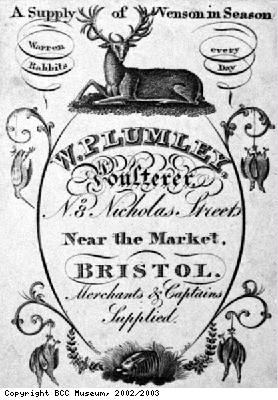
Description:
Trade card, W Plumley, Merchants and Captains supplied , 8, Nicholas Street
Creator: W Plumley
Date: unknown
Copyright: Copyright BCC Museum
Trade card
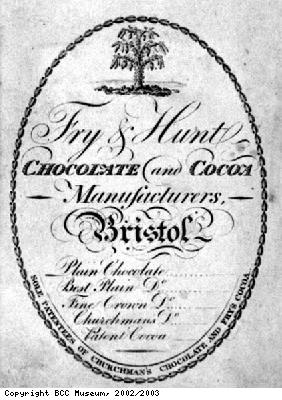
Description:
Trade card for Fry and Hunt, chocolate and cocoa manufacturers.
Cocoa, which was used to make chocolate, was grown on slave planations in the Caribbean and brought to Bristol for processing.
Chocolate was first used as a drink, sweetened with sugar to mask the bitter flavour of the chocolate. Later it was used for making eating chocolate. At this period, most people drank beer, wine or spirits. Water was not safe to drink, tea coffee and chocolate were expensive. Quakers promoted drinking chocolate as an alternative to alcohol.
With thanks to Cabury/Schweppes for the use of this item.
Creator: JS Fry and Sons
Date: unknown
Copyright: Copyright BCC Museum
Eliza Head

Description:
Portrait of Eliza Head (daughter of Emma Head, grand-daughter of Henry Parker, runaway slave), 1900, aged 20.
With thanks to Jenny Randall for the use of this item.
Date: 1900
Copyright: Lent to Bristol Museum and Art Gallery
Commemorative Medallion
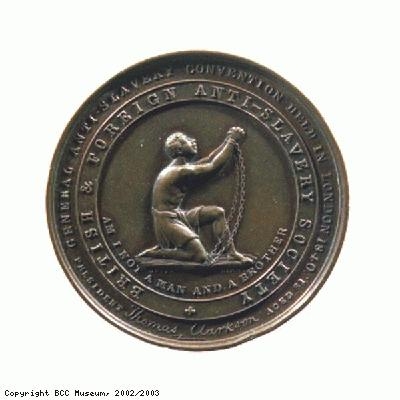
Description:
Commemorative Medallion, British and Foreign Anti-Slavery Society, London Convention 1830’s
Creator: British and Foreign Anti-Slavery Society
Date: 1830's
Copyright: Copyright BCC Museum
Commemorative Medallion
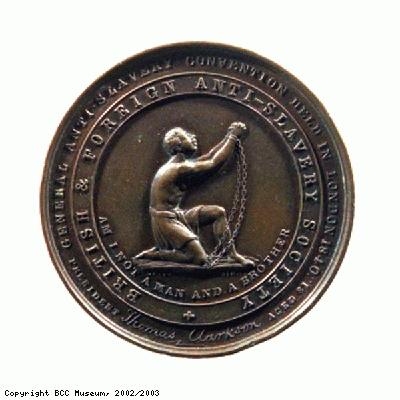
Description:
Commemorative Medallion, British and Foreign Anti-Slavery Society, London Convention 1830’s
Creator: British and Foreign Anti-Slavery Society
Date: 1830's
Copyright: Copyright BCC Museum
Wrapper
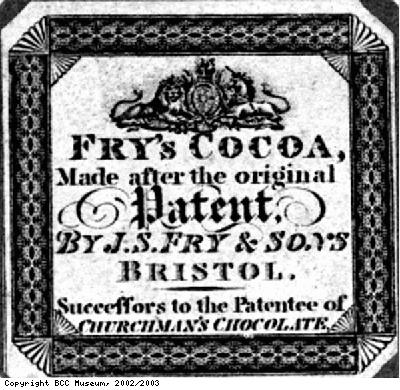
Description:
Chocolate wrapper for Frys Cocoa.
Cocoa, which was used to make chocolate, was grown on slave planations in the Caribbean and brought to Bristol for processing.
Chocolate was first used as a drink, sweetened with sugar to mask the bitter flavour of the chocolate. Later it was used for making eating chocolate. At this period, most people drank beer, wine or spirits. Water was not safe to drink, tea coffee and chocolate were expensive. Quakers promoted drinking chocolate as an alternative to alcohol.
With thanks to Cabury/Schweppes for the use of this item.
Creator: JS Fry and Sons
Date: unknown
Copyright: Copyright BCC Museum
Chocolate wrapper
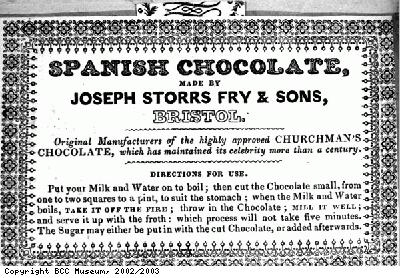
Description:
Chocolate wrapper for Spanish chocolate by J S Fry and Sons.
Cocoa, which was used to make chocolate, was grown on slave planations in the Caribbean and brought to Bristol for processing.
Chocolate was first used as a drink, sweetened with sugar to mask the bitter flavour of the chocolate. Later it was used for making eating chocolate. At this period, most people drank beer, wine or spirits. Water was not safe to drink, tea coffee and chocolate were expensive. Quakers promoted drinking chocolate as an alternative to alcohol.
With thanks to Cabury/Schweppes for the use of this item.
Creator: JS Fry and Sons
Copyright: Copyright BCC Museum
Mountravers Plantation
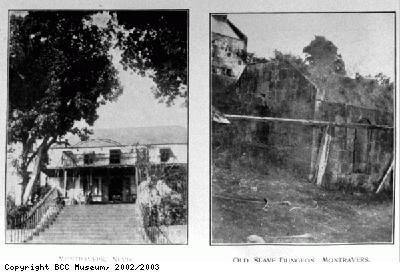
Description:
Picture of the Great House and slave dungeons, Mountravers Plantation, Nevis, Caribbean.The Great House was part of the Mountravers Plantation, owned by sugar merchant John Pinney. He later lived at 7, Great George Street, Bristol, which is now a museum called the Georgian House.
Taken from The Story of the Bettiscombe Skull by J S Udal, Dorset Natural History and Antiquarian Field Club, volume 31, 1910, p 189.
Date: 1910
Copyright: Copyright BCC Museum
Page 307 of 352 pages « First < 305 306 307 308 309 > Last »


